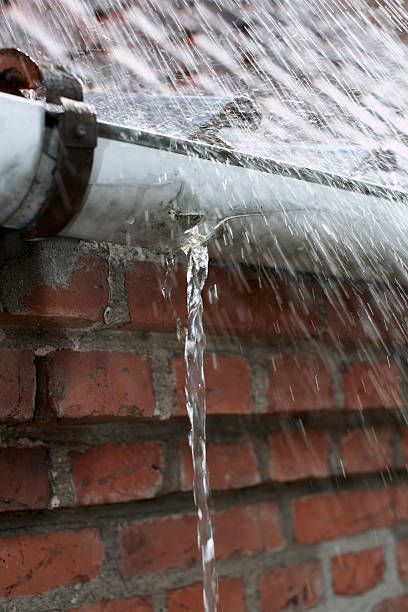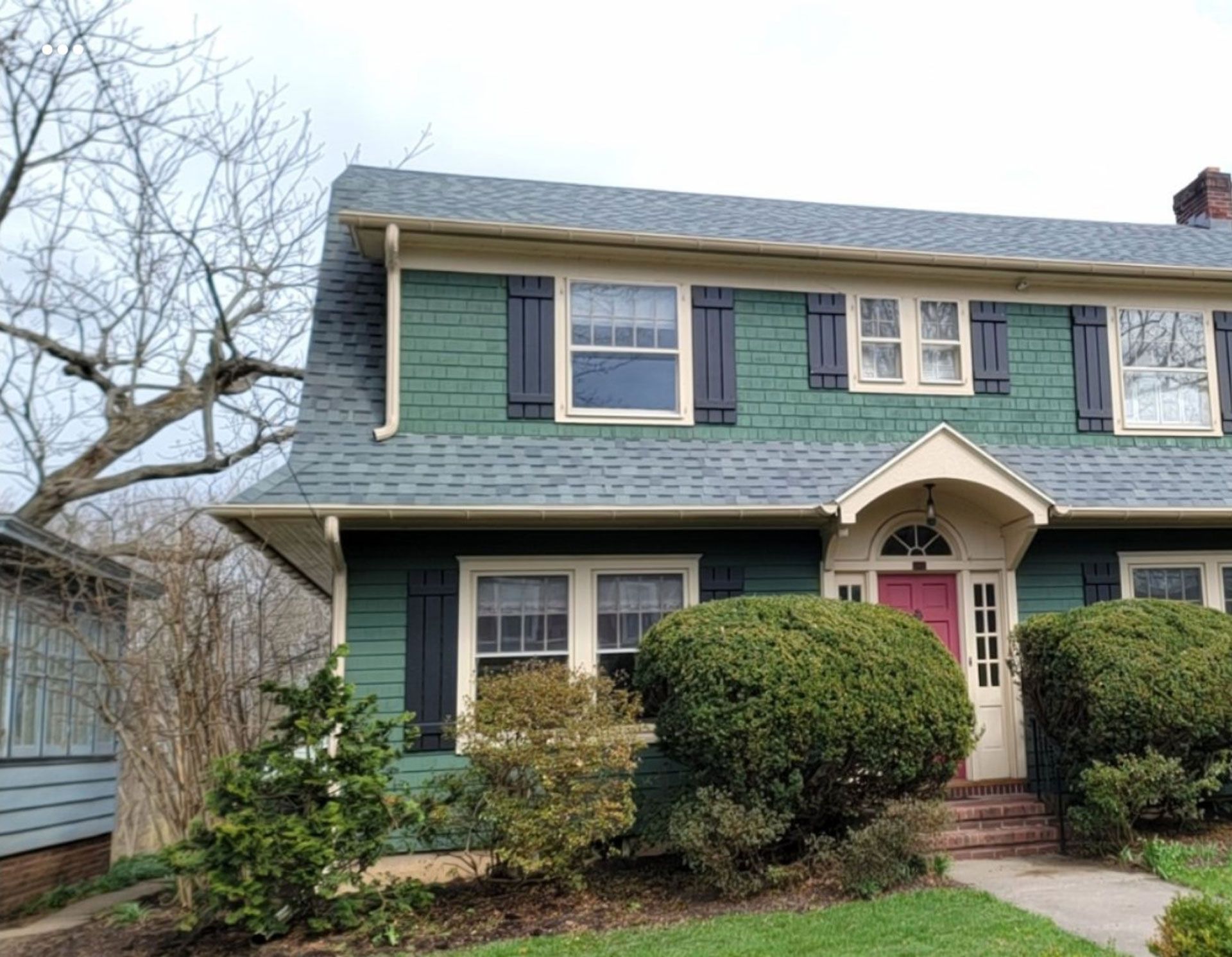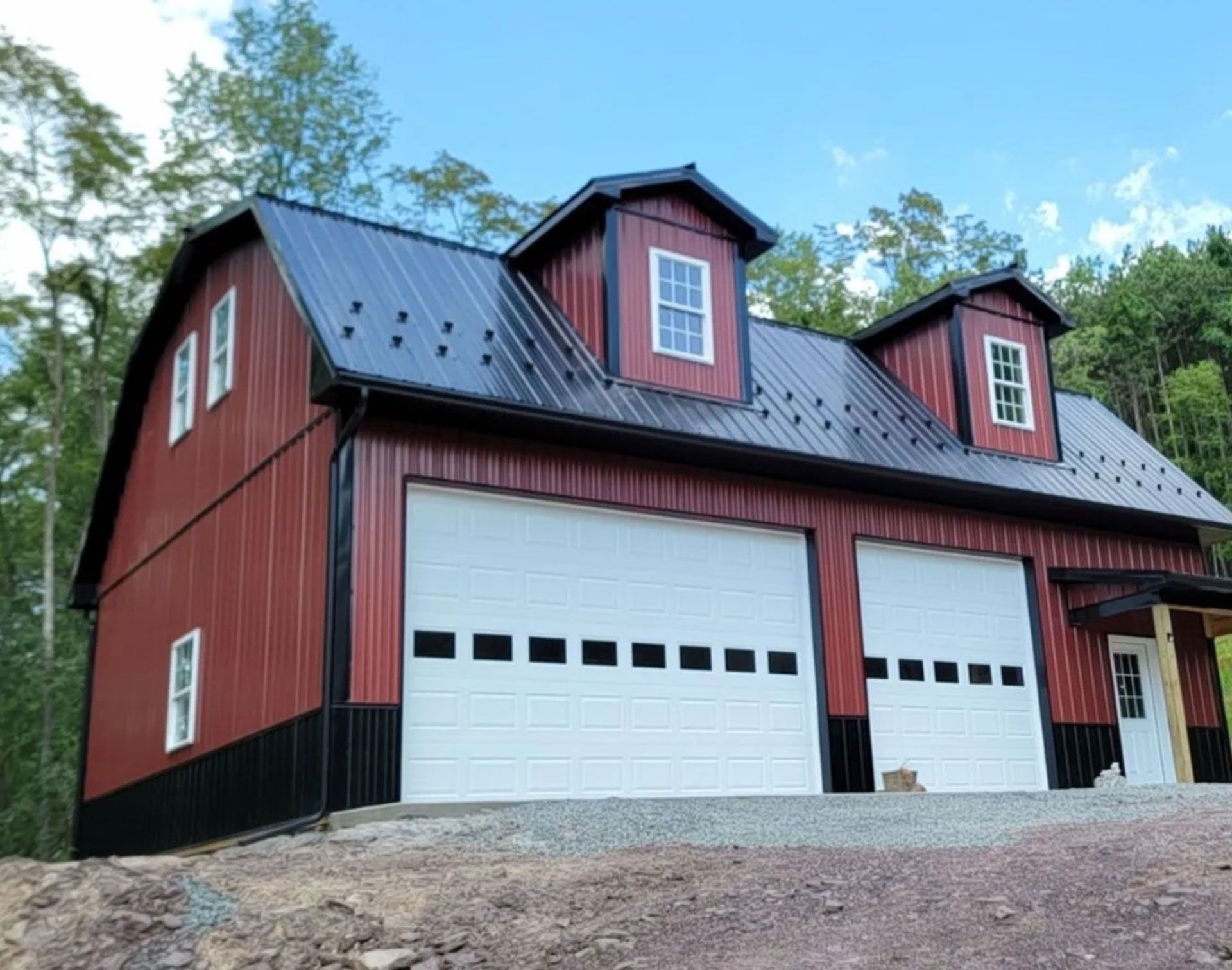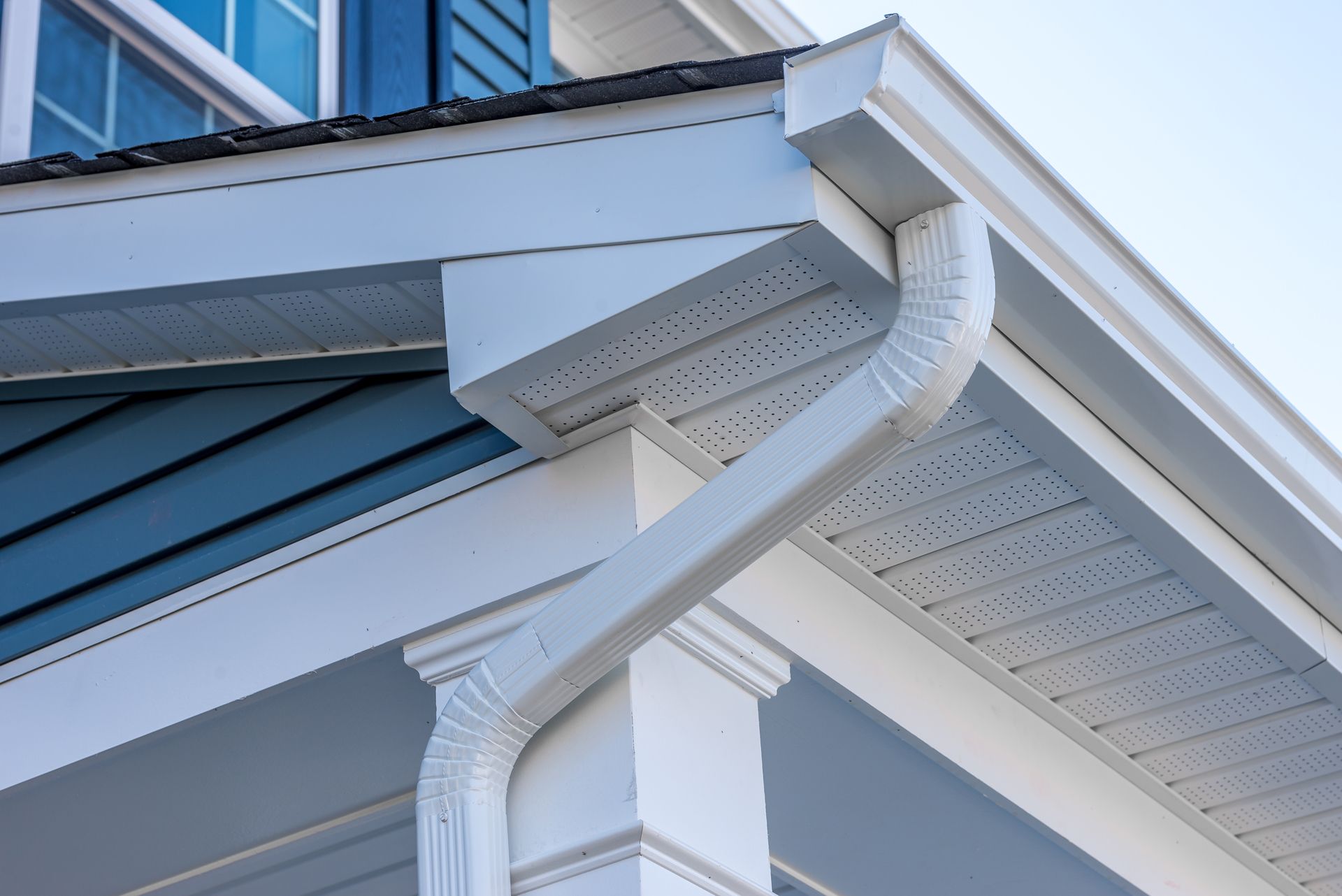Call Us Now! (717) 269-7728
Call Us Now! (717) 269-7728
What Gutter Repairs Can I Safely Attempt Myself?

Gutters play a pivotal role in safeguarding your home from water damage. They are more than mere accessories; they channel rainwater away from your foundation, preventing potential issues.
Understanding the key components of your gutter system and recognizing signs of necessary repairs is crucial. This guide aims to simplify gutter maintenance, blending crucial facts with easy-to-follow insights.
Understanding Your Gutter System
- Downspouts: These vertical components are essential for directing the water from your gutters down to the ground, away from your home’s foundation.
- Gutter Guards: Optional but highly recommended, gutter guards prevent leaves and debris from clogging up your system, making maintenance a breeze.
- Fascia and Soffit: While not part of the gutter itself, these are crucial to its attachment. The fascia supports the gutter from the edges of the roof, while the soffit protects and ventilates the roof’s underside.
Spotting Signs for Repairs
Now that you’re familiar with the basics, let’s talk about when to take action. Keeping an eye out for these indicators can prevent small issues from becoming big problems:
- Sagging Gutters: This is often the first sign of trouble. If your gutters are drooping or pulling away from the house, it’s time for a repair.
- Leaks and Holes: Visible holes or leaks in your gutter or downspout can lead to water damage if not addressed promptly.
- Overflowing Water: If water spills over the sides of your gutters during rain, this could indicate a blockage or improper slope.
- Peeling Paint or Rust: These signs near your gutter system can indicate that water is not being properly channeled away.
By staying vigilant and knowing what to look for, you can tackle gutter repairs before they escalate. Remember, a little maintenance goes a long way in protecting your home from water-related issues. Stay tuned for our next section, where we'll dive into common gutter problems and DIY solutions to keep your system flowing smoothly.
Safety First
Before diving into the world of DIY gutter repairs, it's critical to prioritize your safety. Gutters are often located at significant heights, and the risk of falls or injuries can be high if proper precautions are not taken. Here are some essential safety tips and the importance of using the correct tools to ensure your DIY gutter repair projects are safe and successful.
Essential Safety Tips for DIY Gutter Repairs
- Use a Sturdy Ladder: Always opt for a stable, reliable ladder that can securely reach the height of your gutters. Make sure the ladder is on solid, level ground to prevent any wobbling or slipping.
- Wear Protective Gear: Safety goggles, gloves, and non-slip shoes are a must. Gutters can house sharp debris and metal parts that can cause injury. Protective gear will keep you safe from harm.
- Buddy System: Whenever possible, work with a partner. Having someone to stabilize the ladder and pass tools can significantly reduce the risk of accidents.
- Stay Aware of Power Lines: Be extremely cautious of any overhead power lines near your gutters. Maintain a safe distance at all times to avoid electrocution.
- Check the Weather: Never attempt gutter repairs in bad weather. Wet roofs and high winds can make ladder use dangerous.
Importance of Using the Correct Tools
Using the right tools not only makes the job easier but also safer. For gutter repairs, ensure you have the following:
- A high-quality ladder: Invest in a ladder that is both sturdy and suitable for the height you need to reach.
- Gutter repair tools: Specific tools, such as gutter scoops for cleaning, sealants for leaks, and a rivet gun for securing parts, are crucial.
- Safety equipment: This includes gloves, safety goggles, and sturdy shoes to protect against cuts and falls.
By adhering to these safety protocols and ensuring you have the correct tools for the job, you can safely tackle DIY gutter repairs.
Common Gutter Problems and DIY Solutions
Maintaining a functional gutter system is crucial for the health of your home. Gutters direct rainwater away from your home's foundation, walls, and landscape, preventing water damage. Here, we'll explore common gutter problems and provide step-by-step DIY solutions to ensure your gutters remain in prime condition.
Patching Holes
Materials Needed:
- Gutter patching kit or metal flashing
- Wire brush
- Roofing cement
- Putty knife
Step-by-Step Instructions:
- Clean the Area: Use a wire brush to clean around the hole, removing any rust and debris. Ensure the surface is dry before proceeding.
- Cut the Patch: If using metal flashing, cut a piece slightly larger than the hole. For patching kits, follow the manufacturer's instructions.
- Apply Roofing Cement: With a putty knife, apply a generous layer of roofing cement around the hole.
- Place the Patch: Press the patch firmly over the hole, ensuring it's completely covered with roofing cement. Apply another layer of cement over the patch to seal it.
Fixing Leaky Joints
Identifying Leaky Joints:
Check for water stains or moisture on the underside of the gutter. During rain, observe where water leaks from the joint.
How to Properly Seal Them:
- Clean the joint with a wire brush and ensure it's dry.
- Apply gutter sealant inside the joint and press the pieces together. Use clamps to hold them in place if necessary until the sealant cures.
Reattaching Loose Gutters
Loose gutters can lead to improper water drainage and damage to your home’s exterior. Spikes may pull away from the fascia over time.
When to Use Hanger Replacements Over Spikes:
- Remove the old spikes and inspect the fascia for damage.
- Replace with gutter hangers, which provide more support and are less likely to pull away.
Handling Downspout Issues
Adjusting downspout placement ensures water is directed away from your home's foundation.
Materials and Steps:
- Use downspout extensions to redirect water further away from your home.
- Secure extensions with screws to ensure they stay in place during heavy rains.
Overflowing Gutters
Caused by blockages or improper slope, overflowing gutters can lead to water damage.
Solutions:
- Regular cleaning to remove leaves and debris.
- Check the gutter slope and adjust if necessary to ensure water flows towards downspouts.
Preventative Measures and Maintenance
Preventing gutter problems begins with regular maintenance. Cleaning gutters at least twice a year, cause blockages and water damage. Here are additional preventative measures and maintenance tips to keep your gutter system in optimal condition:
How Regular Cleaning Can Prevent Most Issues
Regular gutter cleaning is the cornerstone of preventative maintenance. Debris like leaves, twigs, and dirt can quickly accumulate, causing clogs that lead to water overflow and damage to your home’s exterior and foundation. Cleaning your gutters in the spring and fall can prevent these issues and extend the life of your gutter system.
The Role of Gutter Guards
Gutter guards can significantly reduce the amount of debris that enters your gutters, thereby minimizing the need for frequent cleanings. They come in various styles, including mesh screens, foam inserts, and surface tension units, each designed to allow rainwater in while keeping debris out. While gutter guards can be an upfront investment, they can save time and money in the long run by preventing clogs and reducing the need for cleaning and repairs.
Regular Inspections
In addition to cleaning, conduct regular inspections of your gutter system, especially after severe weather. Look for signs of sagging, leaks, and rust. Check that all downspouts are intact and directing water away from your home's foundation effectively. Early detection of potential problems can prevent costly repairs.
Professional Cleaning and Maintenance
While DIY maintenance can save money and prevent many issues, consider hiring professionals for an annual inspection and cleaning. They can spot problems you might miss and perform repairs that may be too complex or risky to tackle on your own.
When to Install Gutter Guards
If your home is surrounded by trees, installing gutter guards can be particularly beneficial. They can prevent leaves and twigs from entering your gutters, reducing the risk of clogs and overflow. However, it’s important to choose the right type of gutter guard for your specific situation and to ensure they are installed correctly.
By following these preventative measures and maintenance tips, you can keep your gutter system functioning properly, protecting your home from water damage and potentially saving you from expensive repairs.
When to Call a Professional
While DIY gutter repair and maintenance can be cost-effective and rewarding, there are situations where calling in a professional is not only advisable but necessary. Understanding when to seek professional help can save you from causing further damage to your gutter system or putting yourself in danger.
Identifying Issues That Require Professional Expertise
- Severe Damage: If your gutters have sustained significant damage due to severe weather, accidents, or prolonged neglect, a professional can assess whether repair or full replacement is necessary.
- Complex Repairs: Some repairs, such as fixing extensive structural damage to the fascia or realigning the gutter system's slope, require specialized tools and expertise.
- Safety Concerns: If your gutters are located at a particularly high point or your home is multiple stories, the risk associated with DIY repairs increases significantly. Professionals have the equipment and training to safely make repairs at any height.
- Persistent Issues: If you've attempted repairs but problems persist, such as continued leaking or sagging, it's time to call in the experts. Recurring issues often indicate a more complex problem that requires professional diagnosis and solution.
Conclusion
Maintaining your gutters is crucial for protecting your home from water damage. While many gutter repairs can be managed with DIY efforts, recognizing when to call in a professional can save you time, money, and ensure your gutter system remains in optimal condition. Encourage your readers to tackle manageable repairs but also to recognize the value and safety that professional services provide.
Call to Action
Looking for reliable gutter solutions in Selins Grove, Danville, Northumberland, Newport, Lewistown, or Richfield?
Drip Free Seamless Gutter is your go-to expert for all things gutter-related! From seamless gutter installations to thorough cleaning and repairs, our services ensure your home stays dry and damage-free.
Experience the difference with our professional, efficient gutter services designed to meet your every need. Don’t let gutter issues dampen your day—contact Drip Free Seamless Gutter today and keep your home protected in every season!!










